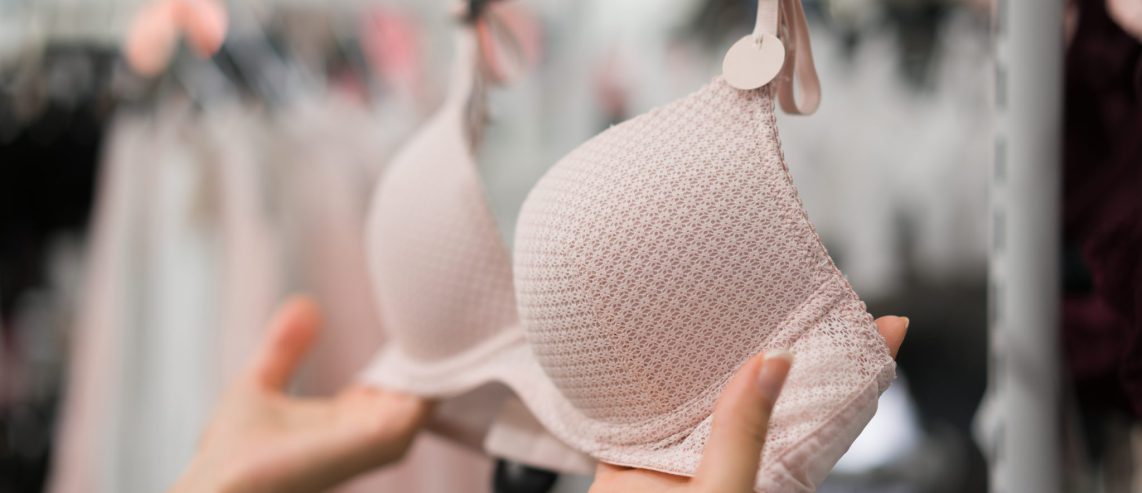Breast sagging or drooping — “ptosis” in medical speak — is very common. It’s not a medical concern, but some women avoid breastfeeding because they worry their breasts will sag after nursing.
If this is a part of your decision-making process for breastfeeding, it’s important to understand the true causes of breast sagging.
Does Breastfeeding Make Breasts Saggy?
Instead, research shows the following factors can contribute to breast sagging:
- Genetics.
- Having large breasts.
- Lack of regular upper body strength training.
- Being pregnant more than once.
- Smoking.
- Major weight gain and loss.
Some of these factors are in a person’s control (like smoking and exercise). Others are not (like genetics).
Never Miss a Beat!
Subscribe to Our HealthBeat Newsletter!
Thank you for subscribing!
You can now select the specific newsletters you'd like to receive.
You are already subscribed.
Subscribe to more newsletters in our email preference center.
Sorry, an error occurred. Please try again later.
Get Healthy Tips Sent to Your Phone!
Why Do Breasts Sag?
Breasts sag when the skin stretches to make way for fuller breasts, and then the breasts shrink again. As our skin becomes less elastic with age, it doesn’t shrink as quickly as the breast tissue. This leads to sagging, as the stretched-out skin doesn’t offer as much support to the breasts.
In short, a mix of aging and breast size change leads to ptosis. Smoking can add to this because the chemicals in cigarettes break down collagen in the skin and make it less elastic.
A lack of muscle mass in the pectoral area can make breasts look more saggy. This is because there is less muscle supporting the fatty breast tissue.
Finally, people with large breasts at some point in life are likelier to have breast sagging later in life. This is because more breast tissue means more gravity. Plus, larger breasts change more over time, causing more skin stretching and sagging.
Breast Sagging After Pregnancy
When you’re pregnant, your estrogen levels go up. This causes your milk ducts to expand to prepare for breastfeeding and your breasts to grow. After being pregnant — whether breastfeeding or not — the breasts usually return to their original size.
This shrinking process happens regardless of whether you breastfeed. Women who don’t breastfeed will notice their breasts shrink weeks to months after birth. Women who breastfeed will see their breasts get smaller in the weeks to months after they stop breastfeeding.
This is why being pregnant but not breastfeeding contributes most to breast sagging. Because younger skin is more elastic, being pregnant at younger ages may result in less sagging than pregnancy at older ages.
But how much the breasts grow while pregnant and how much they shrink varies from person to person. Genetics plays a role.
Some women’s breasts shrink a lot postpartum, and some very little. Some women notice more sagging after pregnancy, while others see less.
Can I Prevent My Breasts From Sagging?
You can’t stop the breast-sagging process altogether. But lifestyle changes can reduce how much your breasts will sag in the future.
- One way to prevent breast sagging is to keep a healthy weight. Eat plenty of fruits and vegetables, whole grains, and lean proteins like lean meats, nuts, and legumes.
- Avoid very restrictive diets — they lead to rapid weight loss and gain. Yo-yo dieting causes the breasts to stretch with growth and then sag with shrinkage.
- Strength training exercises that involve the upper body (arms, chest, back, and shoulders) can also help. This will help you keep a good posture and support your breasts. Strength training is also good for your heart and physical health.
- Wear a comfortable but supportive bra, especially for high-impact activities.
- Finally, not smoking will help keep your skin’s elasticity and prevent sagging. Of course, not smoking will reduce your risk of cancer and many other diseases.
What Can I Do if I Don’t Like the Look of My Sagging Breasts?
If you find your breasts sagging too much, your bras may be to blame. Bras that aren’t the right fit or aren’t supportive enough may lead to sagging. Bras with more structured padding can help you achieve the shape you prefer.
A more supportive and better-fitting bra will be more comfortable for your shoulders and back.
You can also reframe how you see your breasts and body. Social media and popular culture can often spread unfair beauty standards. This can cause women to think that natural, healthy bodies aren’t good enough. Seek positive role models and avoid people who make you feel ashamed about your body. Appreciate your body for nurturing your child.
Ultimately, any decision to have reconstructive surgery should be made based on your own desires, body image, and comfort.
Information about Breastfeeding
While breastfeeding won’t cause breasts to sag, the myth can make some women hesitate. Others may worry that breastfeeding is too difficult or painful. Ultimately, fed is best, no matter how you choose to feed.
Breastfeeding issues are common in the first few weeks. But lactation consultants can help you achieve a good milk supply and a comfortable latch. Health insurance will often cover the fees of these health care workers.
Breastfeeding gives babies all the nutrients they need in the first six months of life. Parents also pass on antibodies through breast milk that helps babies fight off viruses. The American Academy of Pediatrics suggests breastmilk as the sole source of nutrition for the first six months of life.
There are many online resources, in-person classes, and support groups to help you breastfeed. You can find tips, advice, and local resources at the American Academy of Pediatrics and La Leche League websites.
Sources
American Academy of Pediatrics. Breastfeeding. Link
American Society of Plastic Surgeons. Breastfeeding Does Not Cause Sagging Breasts in Augmentation Patients, ASPS Study Finds. Link
Dr. S. Arefanian et al. A Study on Predisposing Factors to Breast Ptosis. Archives of Breast Cancer. Link
Mareesa Brown. What to Know About Sagging Breasts After Pregnancy. Parents. Link
Dr. Brian Rinker et al. Breast Ptosis. Annals of Plastic Surgery. Link
Dr. Brian Rinker et al. The effects of breastfeeding on breast aesthetics. Aesthetic Surgery Journal. Link
Diana West. Body image of mothers. La Leche League. Link
About UPMC Magee-Womens
Built upon our flagship, UPMC Magee-Womens Hospital in Pittsburgh, and its century-plus history of providing high-quality medical care for people at all stages of life, UPMC Magee-Womens is nationally renowned for its outstanding care for women and their families.
Our Magee-Womens network – from women’s imaging centers and specialty care to outpatient and hospital-based services – provides care throughout Pennsylvania, so the help you need is always close to home. More than 25,000 babies are born at our network hospitals each year, with 10,000 of those babies born at UPMC Magee in Pittsburgh, home to one of the largest NICUs in the country. The Department of Health and Human Services recognizes Magee in Pittsburgh as a National Center of Excellence in Women’s Health; U.S. News & World Report ranks Magee nationally in gynecology. The Magee-Womens Research Institute was the first and is the largest research institute in the U.S. devoted exclusively to women’s health and reproductive biology, with locations in Pittsburgh and Erie.

